Here’s How We Designed Toronto’s New Bridges
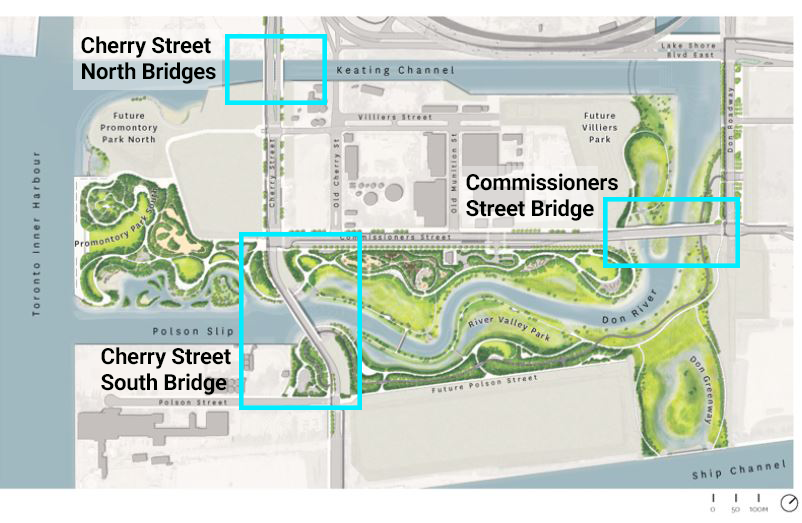
By: Mira Shenker
It’s not often that a city gets the chance to add a new bridge to its skyline – and we’re adding four.
Creating a new island in the Port Lands means we need new bridges to connect downtown Toronto to Villiers Island. There will be two bridges on Cherry Street over the Keating Channel (one for pedestrians, bikes and cars, and a separate dedicated transit bridge), a bridge further south over the new river, plus an east-west crossing where Commissioners Street traverses the new river at Don Roadway.
We asked our design and engineering team, led by Entuitive with Grimshaw and Schlaich Bergermann, to create iconic bridges to move transit, cyclists, pedestrians and vehicles across the new Don River. After much feedback and cross-discipline collaboration, the result is a family of bridges we hope will become new Toronto landmarks.

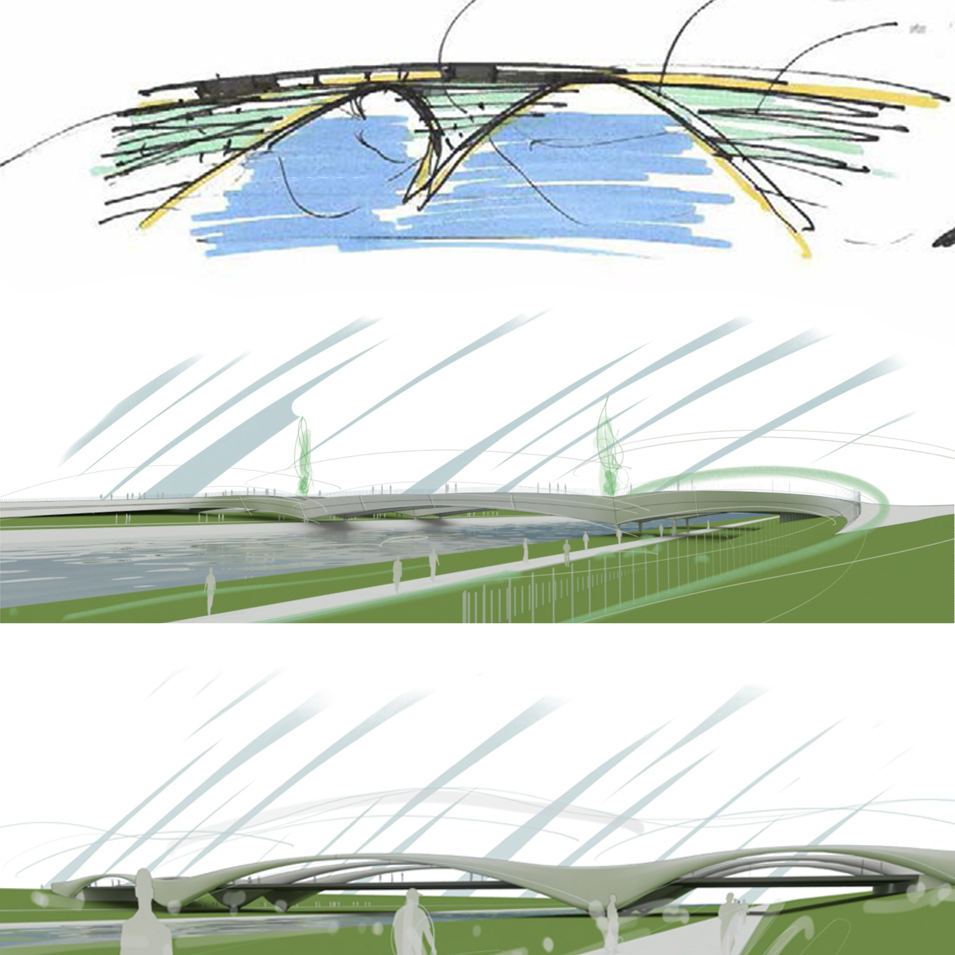
Design progression for new Port Lands Bridges.
Early concepts for the bridges showed a metal tube with holes cut into it. Our Design Review Panel suggested opening the bridge to give people more views of the water. The Port Lands Flood Protection Stakeholder Advisory Committee cautioned us to keep wildlife in mind. To protect wildlife, the team avoided relying on lighting to create beauty and drama and instead focused on shape. The next iterations of the design showed a more sculpted, sleek and open shape.
The design was also driven by engineering constraints. For example, initial concepts showed bike lanes cantilevered over the water on the outside of the bridge. When this was not feasible, the separated bike path was moved to the inside of the bridge. Another challenge: making space for a dedicated streetcar corridor. The solution is to design two bridges for all three locations: one for cyclists, pedestrians and vehicles and another for transit. As part of this project, we’ll build the transit bridge at Cherry Street North and design the others, to be built when demand for transit to the south and east of Villiers Island increases.
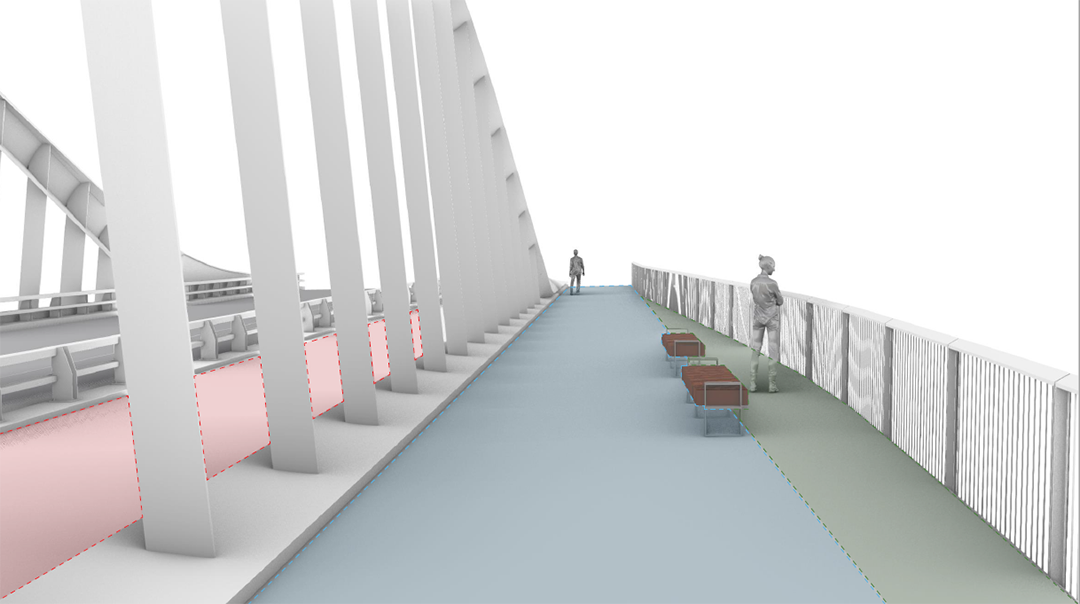
This has been an unusually close collaboration across multiple disciplines. The bridge team worked closely with landscape architects MVVA who are designing the parks, river valley and trail system, and WSP and DTAH who are designing the roads. This allowed them to consider the pedestrian and cyclist experience on, under and around the bridges.
The smooth, sculptural shape of this design is pushing our fabricators, Cherubini Metal Works, to apply innovative techniques to the assembly. The bridges are being fabricated in two stages. The metal is being bent overseas at CIG in the Netherlands. These ship builders have the expertise needed to bend steel into the unique shapes needed for the bridge shell. Once complete, the pieces are sent to Cherubini’s facility in Nova Scotia. There, the bridges are being assembled like puzzle pieces and welded together. They’ll be shipped to three sites in the Port Lands via the St. Lawrence Seaway. The first of these bridges, the LRT bridge for Cherry Street, will be barged from Halifax in one piece and placed over the Keating Channel with a crane.
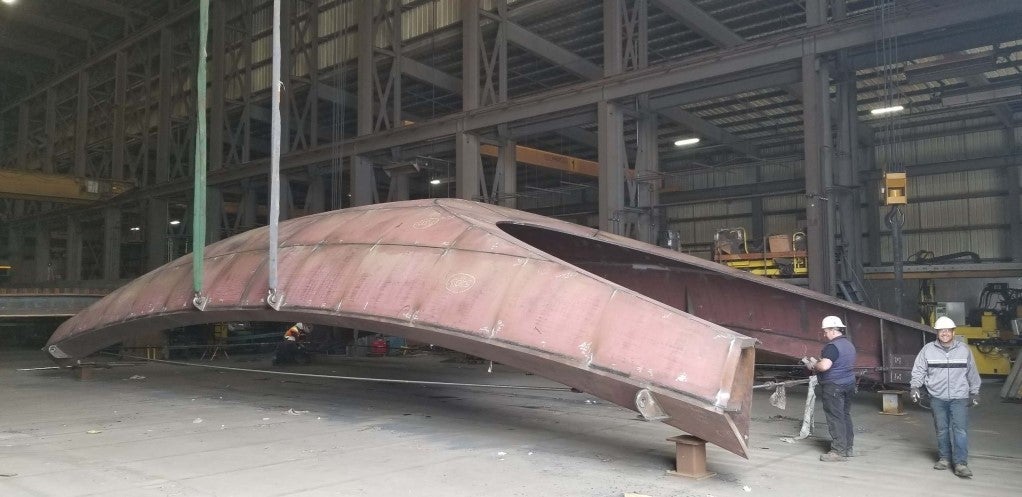
Cherubini uses rods placed in different directions to check for smooth flowing lines, like a steel sculpture. Most bridges are not made that way, so the design team has worked closely with the bridge fabricator, using mockups to adjust their processes. Seen here is a piece of the Cherry Street North LRT Bridge at Cherubini’s Halifax factory.
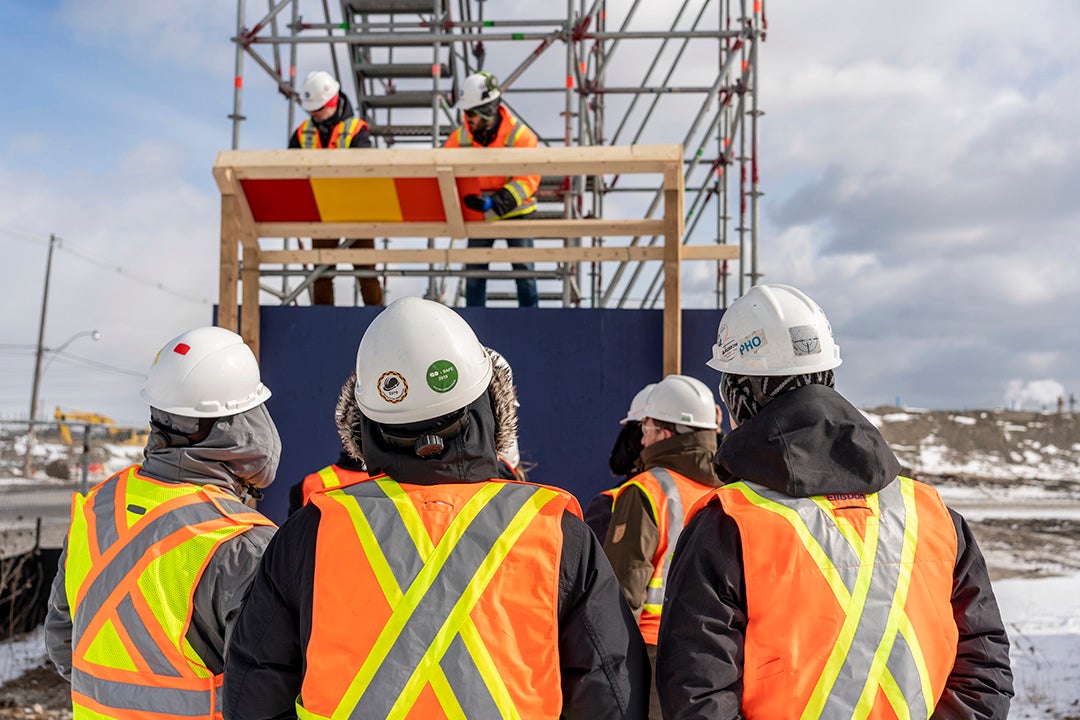
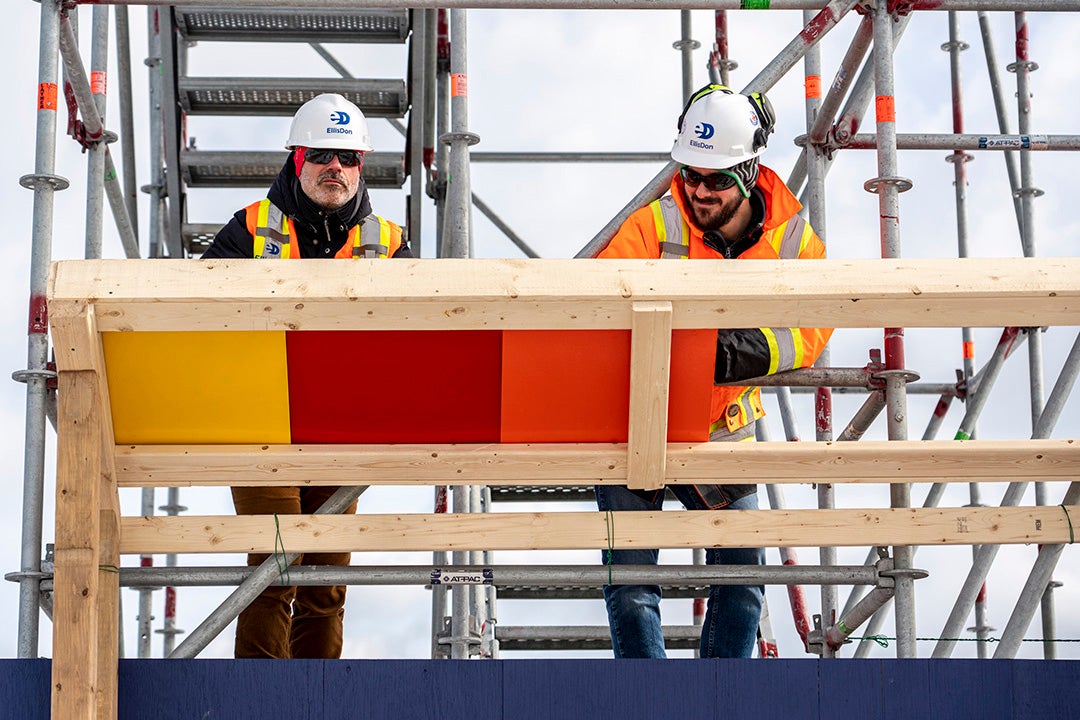
The team opted to use colour on the interior to contrast to the white exterior and accentuate the bridges’ curves. The final orange, red and yellow for the bridge interiors were chosen on a cold February day on the construction site.
From early sketches showing a steel plate tube, workshops and site visits led to a shape that looks more like a landscape silhouette than a bridge. The team is hoping this smooth form will feel less like a collection of pieces of steel and more like a sculpture spanning the river.
Check out the design progression and the final designs for these new bridges here: Commissioners Street Bridge, Cherry Street North Bridge, Cherry Street South Bridge.
